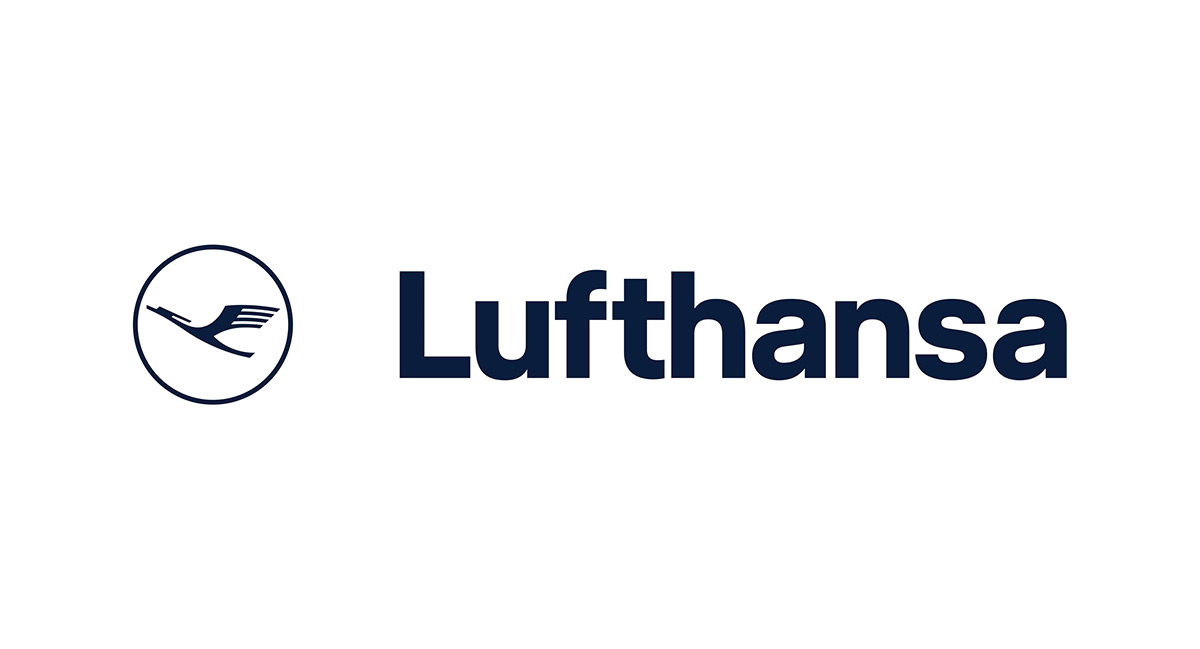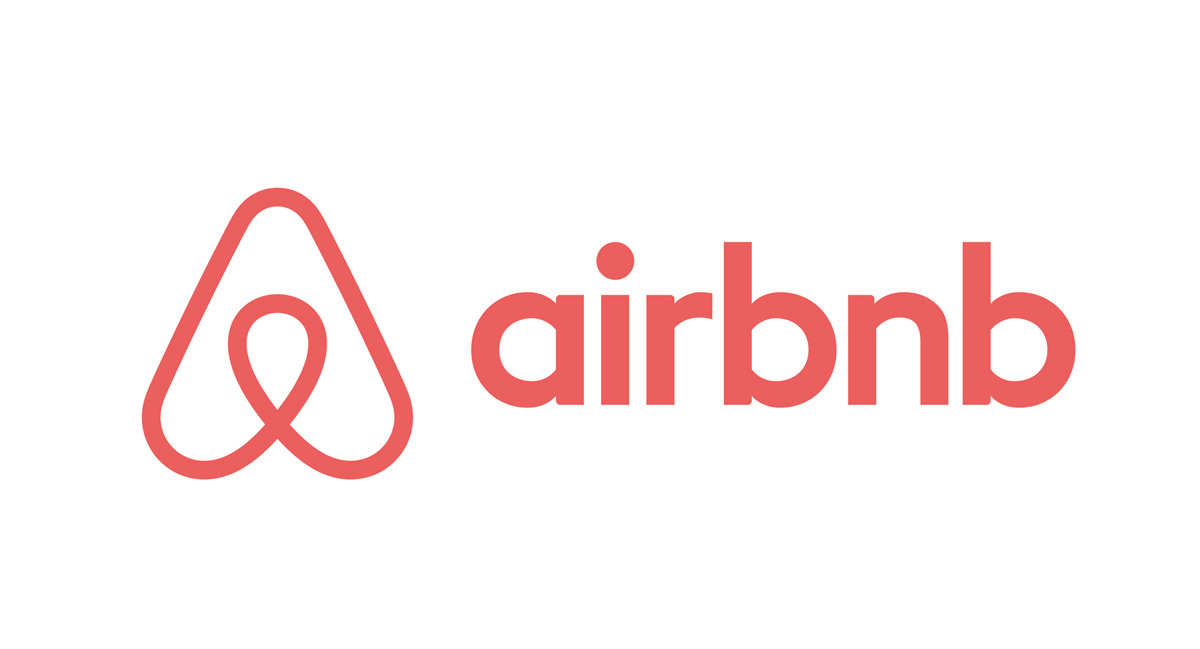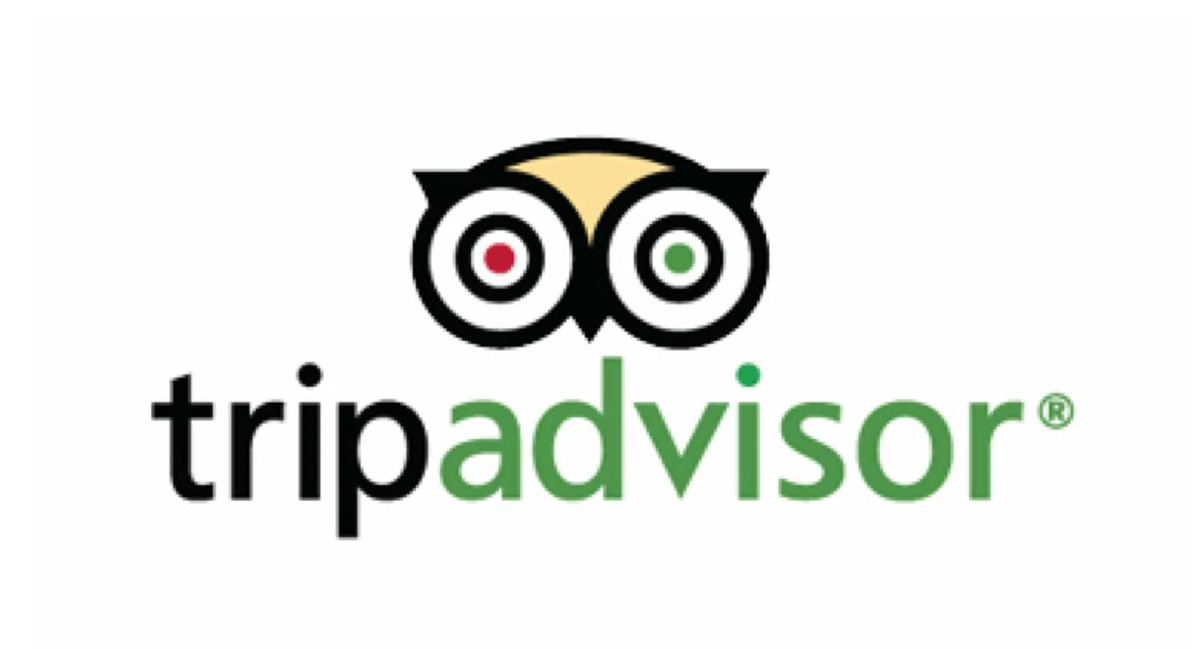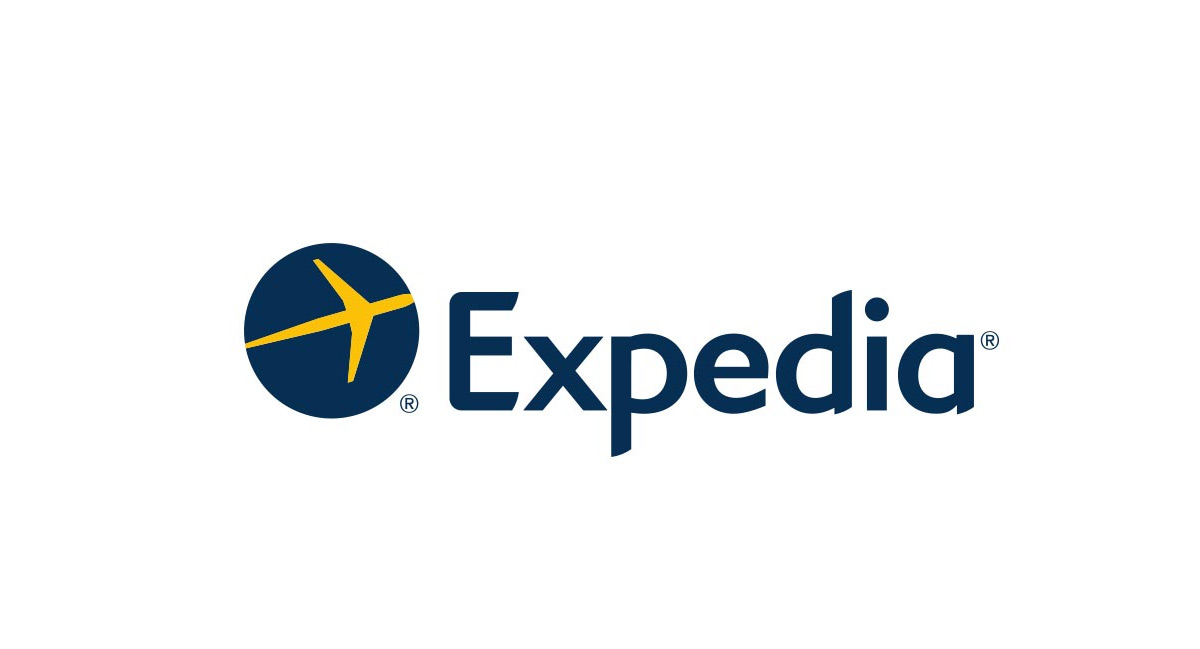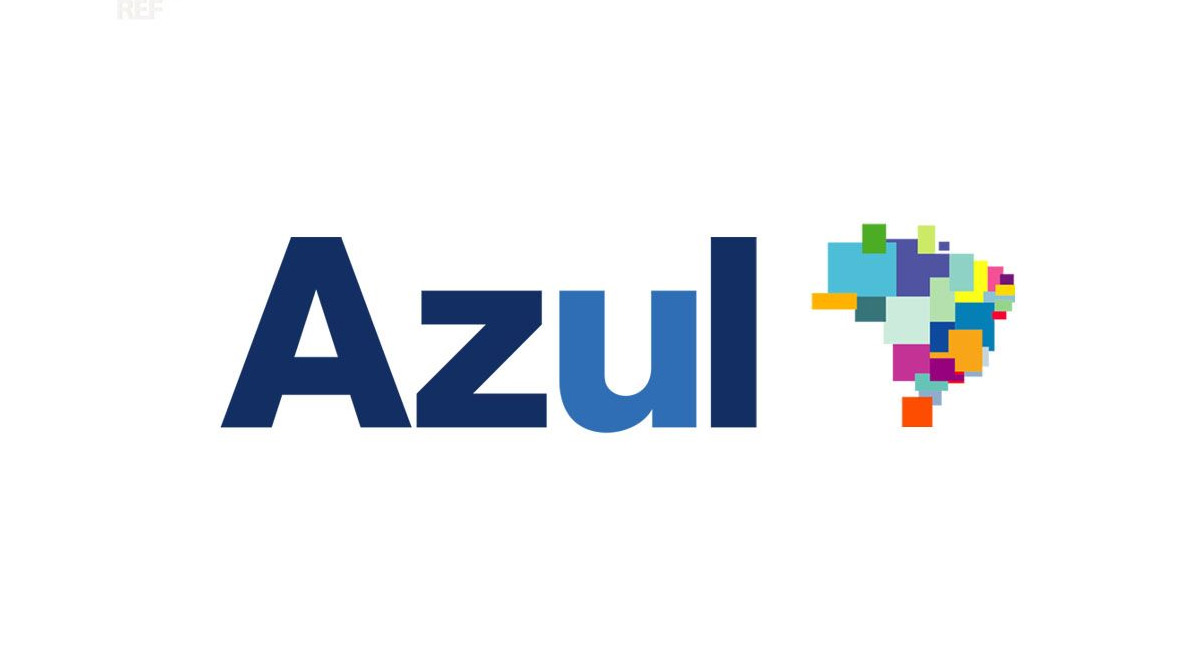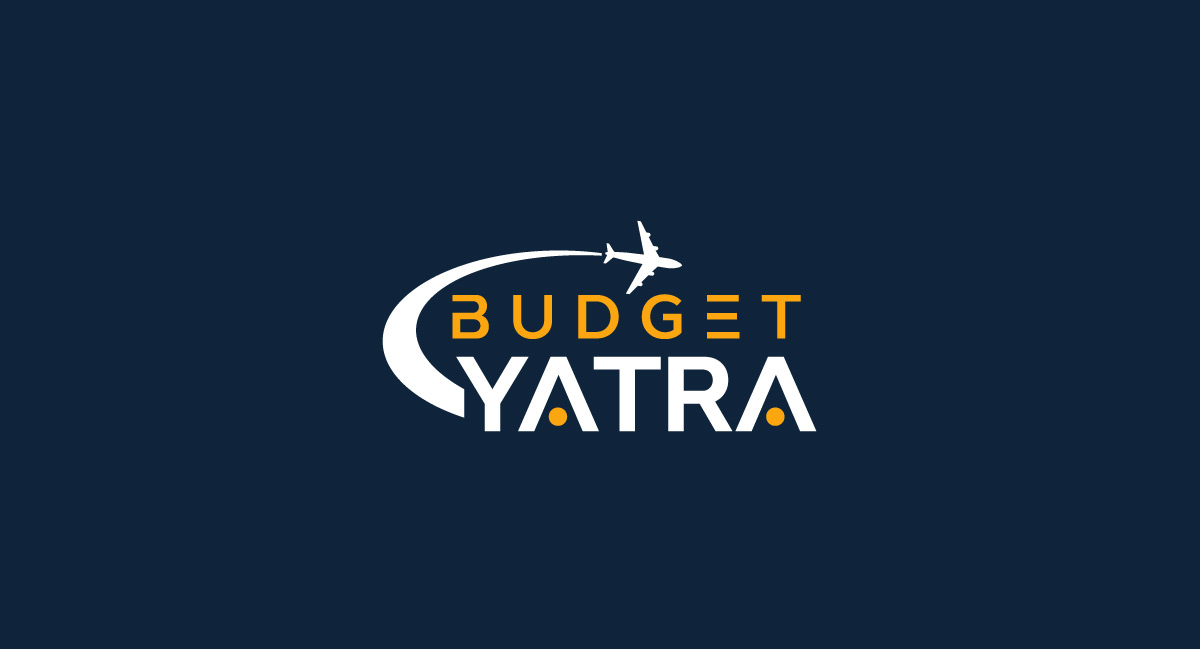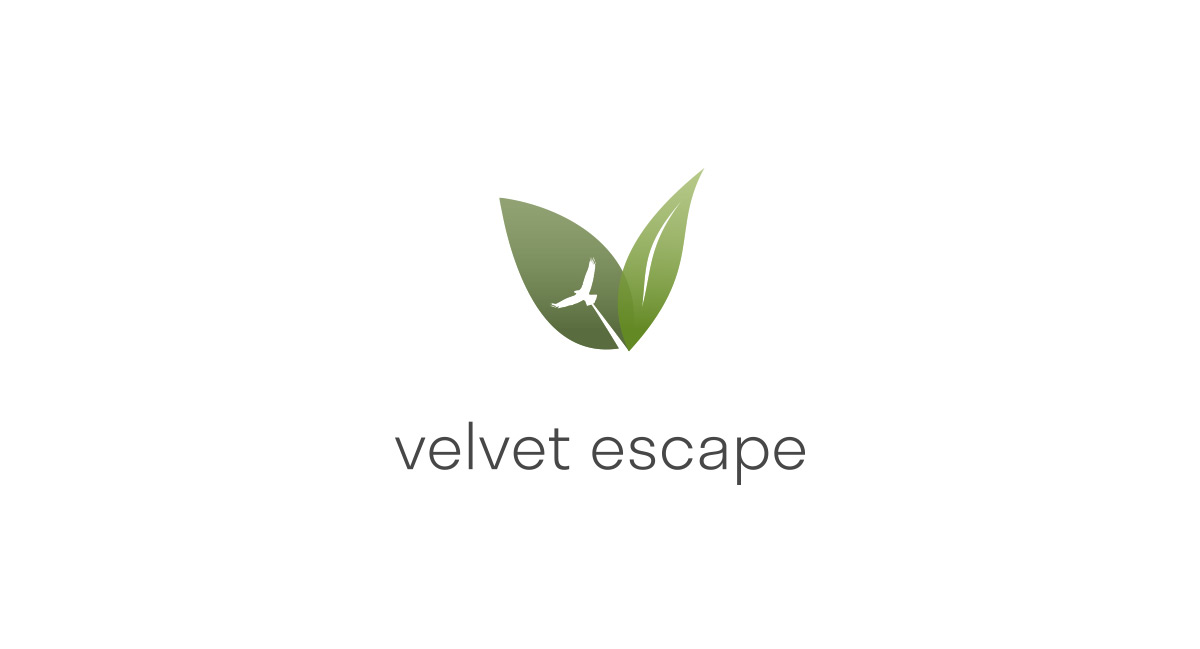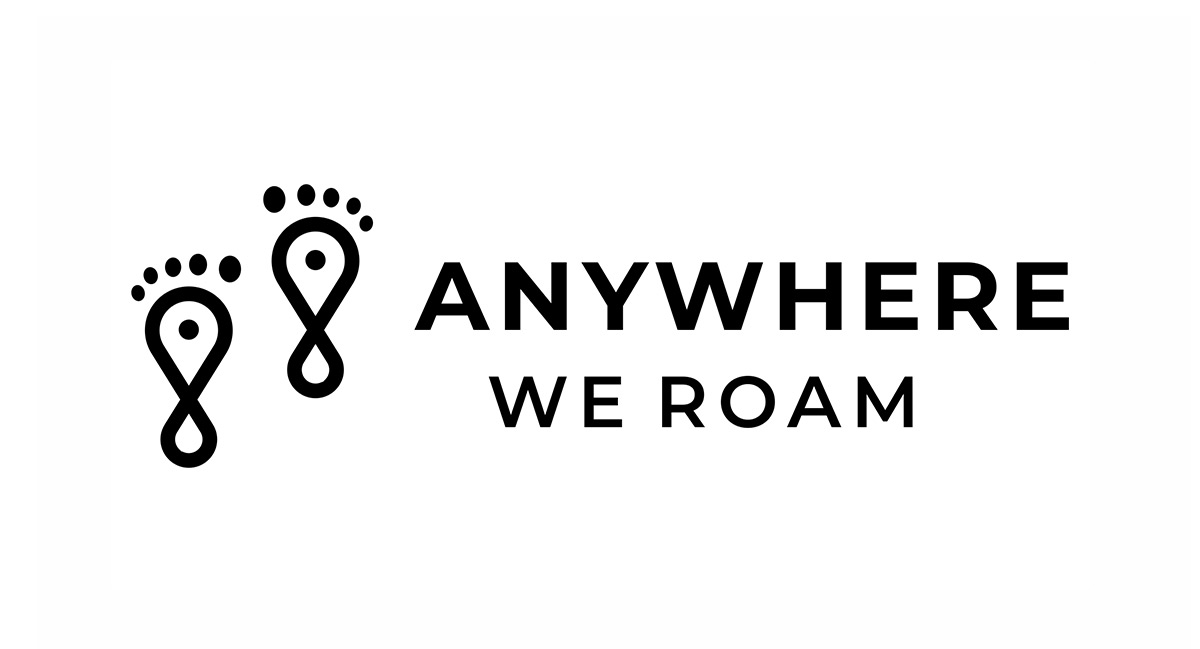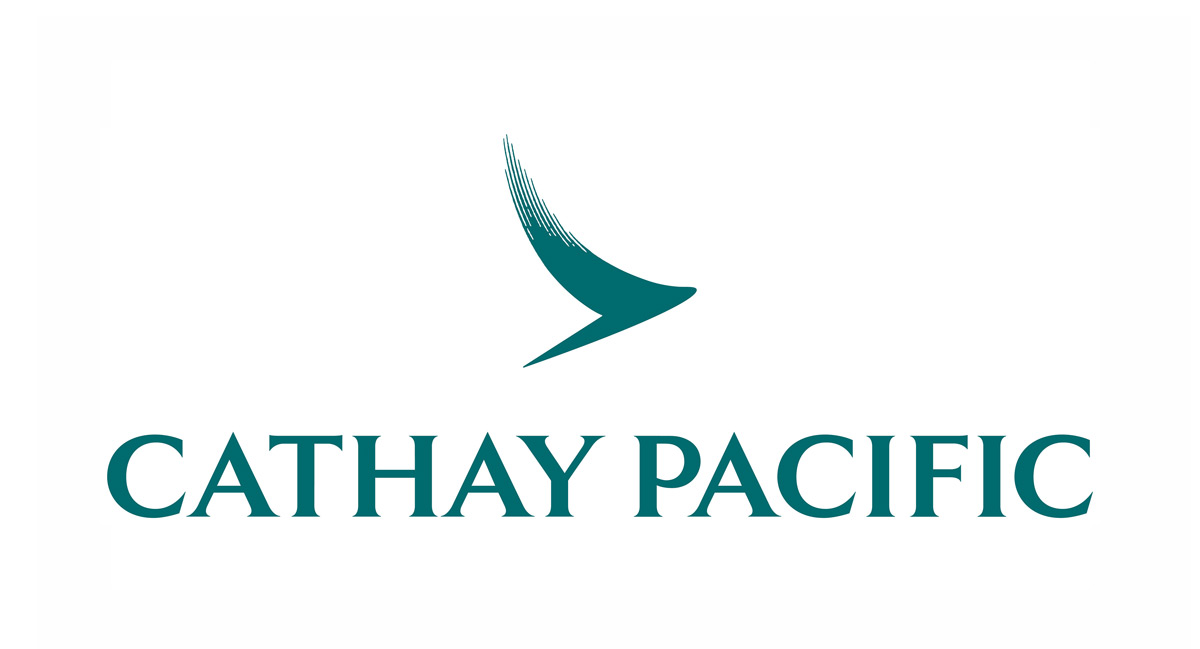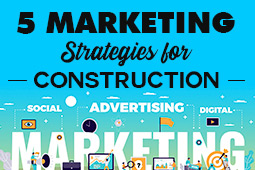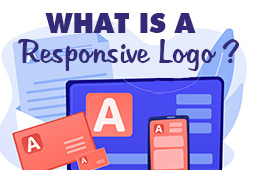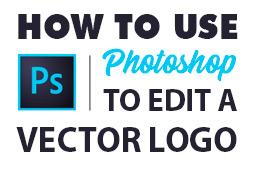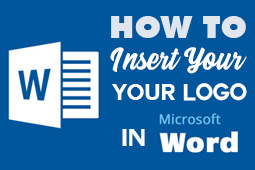Traveling is supposed to be fun and exciting, capitalizing on people’s natural passion for adventure… so why are so many travel logos boring? If you’re a travel brand, your logo should reflect the thrill and exhilaration of the industry to entice customers and encourage their high spirits. The question is, how do you design a travel logo like that if you’re new to logo design?
In this guide, we explain how to design your own travel logo, starting with an in-depth look at the 10 best travel logos to emulate. We’ll explain what these big travel brands do right with their logos, and then dive into practical advice new and small businesses can use for their own travel logos.
1. Lufthansa logo design
The German airline Lufthansa is a great travel logo to start with; they demonstrate a lot of the traditional guidelines for travel logos well. For starters, they use an emblematic bird for their symbol — birds, airplanes, and other flying objects are common choices for travel logos because they represent the freedom of going anywhere (not to mention a lot of travel involves flying).
It’s not just the bird iconography, but also the style in which it’s designed. Lufthansa makes good use of the repeated parallel lines, which, as explained in our guide to using shapes in logo design, denote stability and reliability.
For travel brands, these parallel lines are often used to show motion in static images, giving the illustrated bird a sense that it’s flying forward. Too many straight lines, like those in lettering of their brand name, can make a logo seem stiff or formal. Lufthansa counteracts this by enclosing the bird in a circle to soften their image and appear more casual.
2. Airbnb logo design
One of the most recognizable logos in any industry, Airbnb combines various graphic design principles to create a simple but meaningful travel logo that checks every box. The use of curves and circles makes them appear casual and fun, a good choice to mitigate fears for a brand that invites people to live in strangers’ homes.
This casual style is furthered by the upside-down heart shape, a universally recognized symbol for peace and trust. However, one of the most inspiring elements of the Airbnb logo is the subtle nod to digital map pointers (the shape in the center). Although not always obvious, this oval with a point is associated with markers on digital maps, hinting that the brand is in the travel industry even if the viewer has never heard of Airbnb before.
3. Tripadvisor logo design
Tripadvisor is one of the world’s most popular travel brands, even if they don’t offer long-distance transportation or accommodations. Because they’re more in the realm of advice and planning than actual traveling, they can experiment with more diverse design techniques that other travel brands cannot.
For example, owls are often used for education logos because of their connotation to intelligence. However, because Tripadvisor has one foot in the travel industry and another in the education industry, the owl is the perfect fit — as a bird, it’s well-suited for travel logos. The excessive use of circles also makes them seem more approachable, welcoming to first-time users.
4. Expedia logo design
Airplanes may seem too on-the-nose for travel logos, but there’s no better symbol to represent air travel — no one will question what industry Expedia is in after seeing their logo. What makes this logo great is the extended line coming from the plane’s tail: like Lufthansa’s repeated parallel lines, the long line coming from the back of the plane makes the image look like it’s moving forward, adding more life to the logo.
Also like Lufthansa, Expedia encloses their logo in a circle to make the brand seem more inviting. If you’re familiar with color theory for logo design, you can also appreciate Expedia’s choice of colors. Dark blue suggests capability and trust, necessary traits for alleviating travel fears, while yellow is the perfect pairing to accent, as we explained in our guide to color combinations for logo design.
5. Azul Airlines logo design
With logo design tips, learning the rules is crucial, but so is learning when to break them. Azul Airlines of Brazil deviates from the standard best practices for travel logos, but does so in a way that still works.
Notably, Azul Airline’s logo is very angular, full of rectangles, straight lines, and sharp corners. All of these design techniques are reserved for serious and professional brands — they represent authority and stability at the cost of friendliness.
However, Azul softens the authoritarianism in two ways. First, it uses vibrant and pastel colors, which come off as fun and whimsical to balance things out. It also uses creative and unique visuals — the continent of South America reimagined in a cubist daydream. This visual helps people not only remember the brand, but also associate it with its main geographical area of operation.
6. Budget Yatra logo design
Just as Budget Yatra makes travel services accessible to low-budget travellers, their logo takes traditional travel logo techniques and gives them a “inexpensive” spin. This is a delicate line to walk — everyone wants a low-cost airline but no one wants a “cheap” airline — although Budget Yatra does so gracefully.
For one thing, they use a “cheaper” version of an airplane with its paper counterpart. Paper airplanes can get complicated, so they opted for a simple and easy-on-the-eyes visual style with minimal lines and details. Moreover, their accent color orange is closely associated with inexpensive and budget goods; clearly their logo designers did their research.
7. Velvet Escape logo design
As a travel blog and destination review site, Velvet Escape has different criteria for their logo than an airline or direct travel service. They take advantage of their freedom with their green coloring and environmental imagery — appealing to younger and more eco-friendly travelers.
But Velvet Escape still wants people to know what industry they’re in, so they maintain a few of the travel logo staples. Their logo revolves around the image of a bird, a well-used icon for travel logos, and they attach a long line to the back to show movement (just like Expedia). What they do well is blend all these elements together — the flight line of the bird doubles as the vein of the leaf, creating a memorable logo that readers can easily recognize.
8. Garuda Indonesia logo design
We’ve mentioned the travel logo trends of birds and repeated parallel lines already, but Garuda Indonesia’s logo demonstrates both perfectly. The way the entire logo comes together really emphasizes the dynamic movement of the image, furthered by the way the lines get skinnier from right to left.
It’s also worth mentioning their use of curves — the most noticeable elements are rounded and circular, making the brand seem more playful. Even the bird’s beak and “angry” eyes are slightly rounded at the corners to keep the logo from appearing too aggressive. The color choice, with both light and dark shades of blue, helps the brand appear both friendly and professional respectively.
9. Anywhere We Roam logo design
Another travel blog, Anywhere We Roam seems to take a page from Airbnb’s book. They also use the subtle marker from digital maps as their main image, a cue to onlookers that they’re in the travel business. Unlike Airbnb, however, they include the telltale dot in the center, leaving no doubt that it’s in fact a map marker.
Although black and white logos tend to look more serious than colorful ones, Anywhere We Roam keeps things light with its cute renditions of feet and toes. Their unique style for footprints not only represents the travel industry to first-time viewers, it also leaves a lasting impression in the minds of its readers.
10. Cathay Pacific logo design
Last, we have one of the most successful travel logos, and one that displays some of the best logo design techniques for the industry. Cathay uses a bird shape and repeated parallel lines like other travel logos, but they do so in a way that’s wholly unique and original. It’s even questionable whether that image is a bird at all — although that kind of mystique just makes it more memorable.
That’s the goal of all logo design, not just travel logos — enlist the tried-and-true design techniques, but do them in a way that’s never been done before. If you can manage that, you’ll have a travel logo that looks every bit as iconic as Cathay Pacific’s.
3 Expert Tips for Designing Your Travel Logo
What can you take away from the best travel logos above? Here are the top 3 tips to keep in mind when making your travel logo.
1. Flight imagery
Logos aren’t just about fun colors and animals mascots — logos are communication tools so that anyone who sees them knows what business you’re in. Essentially, your logo is a quick advertisement, explaining who you are and what you do.
So for travel logos, you want to include imagery of flight or flying to indicate that you’re in the travel industry (even if you’re not an airline, like the travel blogs above). The two obvious and most common icons are airplanes and birds, but luckily both have a wide enough range that you can still be unique and original.
Always consider what type of brand you want to be before settling on a single image or style. For example, Tripadvisor wants to come across as educational and wise, so they use an owl — still a bird, but a bird specific to their brand identity. Likewise, Budget Travel uses a paper airplane because they’re a discount brand — still an airplane, but in a style that caters to their specific business goals.
2. Circles and curves
Depending on whom you ask, traveling can be scary and nerve-wracking — especially if there’s air travel involved. To help alleviate these fears, a lot of travel logos incorporate visual styles that relax people, such as pastel colors, cute imagery, and, namely, circles/curves.
As we explain in our guide to shapes in logo design, circles and curves create playful and friendly appearances. Because the eye naturally follows any line it sees, circular and wavy lines come across as whimsical and fun-to-watch, as opposed to straight lines and sharp corners, which come across as serious and no-nonsense.
We see a lot of travel logos use circles and curves to mitigate the natural fears that come with traveling and help put customers at ease. At its heart, travel is supposed to be fun and carefree — a recreational activity — so many travel brands lean into this with casual logo design.
3. Use lines to show movement
A technique straight from the pages of a comic book, lots of travel logos use lines in “trick” the eye into thinking a static image is moving. As mentioned above, the human eye follows any line it sees, and that eye movement can be manipulated into making the image seem more “alive” than it really is.
With travel logos, there’s two uses to this technique that are quite common. The first is parallel lines; the use of multiple lines all traveling in the same direction suggests the object is moving, as if they create a blur, like a photograph of a moving object.
The second is the use of a single line, but done in a way that it attracts most of the attention. In both the Expedia logo and the Velvet Escape logo, the “trail” line is much longer than the other lines, making them stand out. The beauty of this technique is that you can do anything you want with the line: a straight long line makes it seem like the image is going faster and farther, but a wavy or loopy line can make it look like that object is dancing or having fun.
Regardless of which technique you use, make sure to put the line behind the object to make it look like it’s moving forward. In short, place the lines to indicate where the object has been, not where it’s going.
How to Design a Travel Logo With a Logo Maker

Now that you have an idea of what goes into an effective travel logo, the question is, how do you make one? Essentially you have two options: hire someone to design it for you or design it yourself. Both have their own merits and drawbacks, so let’s examine both individually.
Hiring a Designer
Professional designers know by heart all the tips, tricks, and techniques we’ve mentioned above, and then some. When you hire a designer, freelance or from an agency, you’re buying their expertise just as much as their time.
The problem is, no skilled designer works for free. The most glaring downside of hiring a designer is the cost — talented designers charge hundreds or even thousands of dollars for logo design.
Sometimes you can find cheaper alternatives on sites like Fiverr, but those sites have a poor record for delivering what they promised, and there’s tons of ex-Fiverr users who felt they were ripped off. The industry standard for a logo design is around $200, so if someone charges $5, you’re right to be suspicious.
Moreover, even if you have the money to spare, it can be difficult to find the right designer for you. Graphic design is a creative field, so there are innumerable artistic styles to choose from. You have to be sure to find a designer who both understands your vision and is capable of bringing it to life, but that can take time.
Design a Logo Yourself With our Logo Maker
If you don’t have spare cash in your budget for a logo, don’t despair. While in the past you may have had limited options, nowadays technology has advanced so that virtually anyone can design their own logo using an online logo design tool like logogenie.
In our digital era, design software is less about the technical skill of your hands and more about your creative ideas. You don’t need to master your brush strokes or pencil shading — you don’t even need steady hands. With digital logo makers, all you need is an idea.
Logogenie, and other online design tools, use templates to make design fast and easy, even for first timers. First, you select your industry from the dropdown menu.
We’ve categorized our templates by the needs and demands of the top industries, so finding yours is the first step. Our algorithm will then generate the top choices for your industry.
Simply choose the one you like and start editing. You can customize each template however you want, personalizing your choices for:
Main images
Company name and slogan
Font and typography
Color schemes
Text and picture sizes
Text and picture placement
Adding new icons
Layering (putting some images behind or in front of others)
You can choose from our internal library of over 200 icons. A quick glance shows that there are plenty of the intellectual imagery we mentioned above, including trees with rainbow leaves, shield crests, books, graduation caps, and more.
If you want to use more advanced techniques, we wrote a quick beginner’s guide to using Logogenie. This explains all the nuances of the Logogenie interface, including how to edit individual aspects of the base image, change certain colors but not other, and perfecting your typography.
Using a DIY logo maker like logogenie, you can create a professional-tier logo in just minutes. When you’re done, you can buy all permissions and commercial licensing for $24.90, which grants you your logo forever.
While the template-style of design works well for first-timers, you’ll get better results if you bone up on some graphic design basics beforehand. Keep reading our blog for special design tips, straight from expert designers.

